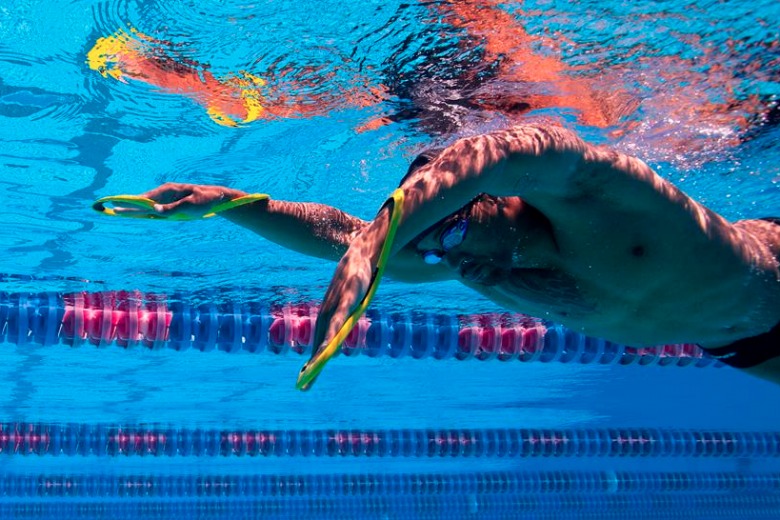Early Vertical Forearm (EVF) is a position that is a critical to fast swimming across the board. EVF is most often considered to be the “front end” of the stroke, or the start of the pull or catch. The Forearm Fulcrum locks the swimmer’s wrist in line with their forearm, encouraging them to anchor their elbow and pull with a larger surface area. A vertical forearm is seen when the elbows are kept high which also helps engage the muscles in the chest, core, and lats. Coupled with a timely rotation of the hips and torso, EVF will increase speed and also endurance over a longer sustained effort.
Learn to add EVF into your stroke with using the Forearm Fulcrum to complete these drills..
4 rounds (@ moderate intervals)
*First 2 rounds with the Forearm Fulcrum
75 Free
4 x 50 Freestyle Single Arm Drill (3 right, 3 left, 3 both arms)
75 Free
4 x 50 Cork Screw Drill (3 stroke free, 4 strokes back)
75 Back
Also see Getting Fit with the Ultimate Drag Suit.
Founded in 1993 in Northern California, FINIS was started by John Mix and Olympic Gold Medal Swimmer Pablo Morales. The Monofin and the Swimmer’s Snorkel were the first products they developed for the US market; afterwards, they continued to focus on creating training tools for swimmers and coaches worldwide. FINIS products are currently available in over 65 countries and are used by US and International Olympic teams, elite triathletes, and fitness swimmers.
Innovative research and design is FINIS’ highest priority. This dedication has resulted in truly unique products such as: the Swimmer’s Snorkel, which is recognized as the paramount tool to improve a swimmer’s technique, the SwiMP3 that uses bone conduction technology to play music instead of using ear buds, and the Z2 Zoomers fins, which demonstrate an intimate understanding of swimming musculature, hydrodynamics, and engineering.
This swimswam content is courtesy of FINIS.

This information really help me to understand the concepts of catching the water in your swimming. Good !!!
Hate to break the news to all you “Forearm Fulcrum” fans…but early vertical forearm actually creates less propulsive force than a deeper straighter arm pull.
In reality, the EVF pulling pattern creates “less drag” and that’s what really makes it advantageous.
Thus, less force means less muscle fatigue and less drag during each arm pull. Thus, the energy cost of swimming is less.
DR. EVIL HAS SPOKEN!!
But you agree that is still and important part in freestyle and will ultimately make you faster?
Mr. Evil,
Good point, but we stand by the article.
Anchoring the elbow and establishing the EVF also engages muscles along the side of the torso and through the abdomen. This aids in the rotation towards the other side, and also helps to reduce fatigue over sustained efforts, because you are counting on larger muscle groups to help move you through the water versus the smaller muscles in only the shoulder.
If you want to simulate this on dry land, try using a straight arm pull versus a bent arm + rotation to pull a weighted cable. You will be able to pull much more weight in this manner.
Also, keep in mind that only a small percentage… Read more »